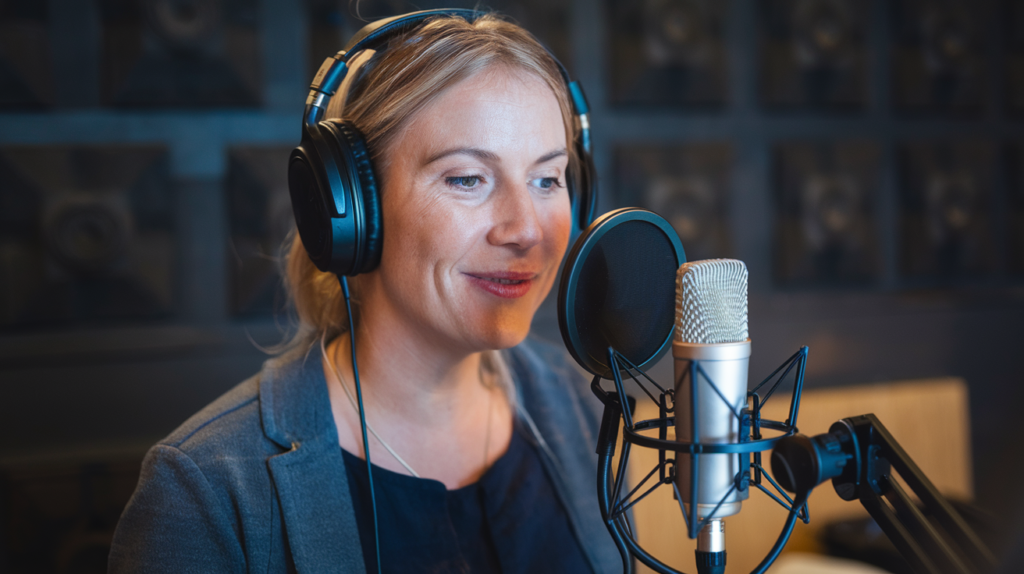Key Takeaways
- Cultural Significance of Accents: Māori and Pākehā accents reflect deeper cultural narratives in New Zealand, influencing storytelling and audience connection.
- Distinct Characteristics: The Māori accent features unique vowel sounds that lend a melodic quality, while the Pākehā accent blends British influences with local nuances emphasizing clarity.
- Impact on Representation: Accents play a crucial role in character authenticity within media, affecting how stories are received by audiences and shaping perceptions of identity.
- Historical Context Matters: Understanding the historical evolution of both accents enriches our appreciation for their significance in media narratives and cultural representation.
- Current Trends Highlight Authenticity: There is a growing recognition of the importance of using authentic Māori and Pākehā accents in media to enhance viewer engagement and avoid stereotypes.
- Voice Actor Versatility: Skilled voice actors who can navigate both accents contribute significantly to authentic storytelling, fostering emotional connections with diverse audiences.
Ever noticed how accents can shape our perceptions? In the world of media, the difference between Māori and Pākehā accents isn’t just a matter of sound; it reflects deeper cultural narratives. Understanding these nuances can enhance your appreciation for New Zealand’s rich tapestry of voices.
As you dive into this exploration of Māori vs Pākehā accents in media, you’ll uncover how they influence storytelling and representation. Why do certain accents resonate more with viewers? What impact does this have on identity and connection? Join me as we unpack these fascinating dynamics that go beyond mere pronunciation and delve into the heart of culture itself.
Overview of Maori and Pakeha Accents
Māori and Pākehā accents each hold unique characteristics reflecting New Zealand’s cultural landscape. The Māori accent, influenced by the indigenous language, features distinct vowel sounds that contribute to its melodic quality. For instance, the pronunciation of certain vowels can sound softer or more rounded compared to English.
On the other hand, the Pākehā accent represents a blend of British influences with local variations. It tends to emphasize clarity in consonants, especially in words borrowed from Māori. This accent often carries an urban vibe, particularly in cities like Auckland and Wellington.
In media contexts, these accents shape perceptions significantly. A voiceover artist’s choice between using a Māori or Pākehā accent can impact audience connection and relatability. When you hear a particular accent in storytelling, it evokes specific cultural narratives that resonate differently based on viewers’ backgrounds.
Voice actors skilled in both accents offer versatility for various projects. Their ability to switch seamlessly between styles enhances authenticity in character portrayal and narrative delivery. Understanding these nuances helps you appreciate how voice talent contributes to broader cultural representation within media.
Historical Context
Understanding the historical context of Māori and Pākehā accents reveals how these voices shape narratives in New Zealand media. Accents carry stories, experiences, and cultural significance that resonate with audiences.
Development of Maori Accents
Māori accents evolved alongside the indigenous language, Te Reo Māori. As speakers embraced their heritage, distinct vowel sounds emerged, creating a melodic quality. This accent reflects deep connections to land and culture. In media, voice actors who embody this accent enhance authenticity and foster cultural pride among viewers. Their performances often evoke emotions tied to ancestral narratives, making stories more relatable.
Development of Pakeha Accents
Pākehā accents stem from British influences combined with local nuances developed over centuries. As settlers adapted to their new environment, they incorporated elements of Māori language into their speech patterns. This blend emphasizes clarity in consonants while also showcasing regional variations across New Zealand. Voice artists skilled in this accent can effectively connect with diverse audiences by delivering content that feels familiar yet unique. Whether it’s a commercial or a documentary, understanding these subtleties helps portray an authentic narrative that resonates deeply with viewers’ experiences.
Exploring these acculturated accents not only enriches storytelling but also invites deeper engagement with the diverse identities within New Zealand’s landscape.
Representation in Media
Accents play a crucial role in how stories are told and received. Māori and Pākehā accents shape narratives, influencing audience perceptions while reflecting cultural identities.
Television and Film
In television and film, the choice of accent significantly impacts character authenticity. Voice actors embodying Māori accents bring depth to indigenous voices, offering viewers a genuine connection to culture. Their ability to convey emotion through unique vowel sounds enhances storytelling, creating experiences that resonate deeply with audiences. Conversely, Pākehā accents often reflect clarity and familiarity for many New Zealanders. This blend of British influence with local nuances allows voice talent to craft relatable characters that feel grounded in everyday life.
The use of diverse accents enriches plots by presenting multifaceted perspectives. When casting directors select voiceover artists skilled in both Māori and Pākehā accents, they foster inclusivity within narratives, inviting broader engagement from varied demographic groups.
Radio and Podcasts
Radio and podcasts serve as platforms where accents can create an intimate atmosphere. The warmth of a Māori accent can evoke feelings of home or belonging among listeners familiar with its cadence. Similarly, the clarity of a Pākehā accent facilitates understanding for diverse audiences engaging with content ranging from news to entertainment.
Voice over talent thrives in this audio format by using their skills to connect listeners emotionally through tone and inflection. Whether it’s storytelling or discussions about cultural issues, voice artists have the power to bridge gaps between different communities.
Both mediums highlight how representation matters; when you hear an authentic accent on airwaves or screens, it validates your experience while fostering empathy across cultures.
Impact on Perception
Accents play a pivotal role in shaping perceptions within media, influencing how audiences connect with stories and characters. When you hear a Māori or Pākehā accent, it evokes specific cultural narratives that resonate differently depending on your background.
Stereotypes and Misrepresentation
Accents often carry stereotypes that can lead to misrepresentation. For instance, hearing a Māori accent might evoke thoughts of indigenous culture and connection to the land. However, if not portrayed authentically by skilled voice actors, these accents risk reinforcing clichés instead of celebrating their richness. On the other hand, Pākehā accents may be associated with British heritage and mainstream narratives. This association can flatten diverse character experiences when nuanced portrayals are needed. The selection of voice talent matters significantly; it creates opportunities for accurate representation while challenging existing stereotypes.
Accents and Identity
Your identity is intricately tied to the way you speak. For many viewers, hearing familiar accents fosters a sense of belonging and recognition in media. A voiceover artist who captures the essence of a Māori accent brings authenticity to characters rooted in that culture, affirming their identities through relatable storytelling. Conversely, Pākehā voices provide clarity and familiarity for broader audiences seeking connection in narratives they consume. By effectively blending these accents into performances, voiceover talents contribute meaningfully to audience engagement and emotional resonance within stories.
Understanding how accents shape perception helps illuminate deeper connections between culture and media representation. Whether through thoughtful casting choices or versatile voiceovers that embrace both Māori and Pākehā nuances, the impact on viewer experience is profound.
Current Trends
Current trends in media reveal a growing recognition of the significance of accents, particularly Māori and Pākehā. These accents not only contribute to the authenticity of characters but also shape audience engagement in profound ways.
Evolution of Accents in Media
Accents have evolved significantly within New Zealand media, reflecting broader cultural narratives. Māori accents, deeply tied to Te Reo Māori, showcase unique vowel sounds that resonate with indigenous heritage. Conversely, Pākehā accents blend British influences with local nuances, emphasizing clarity and approachability. As voice actors increasingly embrace these accents, they enhance storytelling by bringing a genuine connection to characters. The choice of accent often hinges on character backgrounds or specific narrative arcs, making it essential for voice artists to adapt their skills accordingly.
Audience Reception
Audience reception plays a crucial role in how effectively these accents impact storytelling. Familiarity with an accent can evoke feelings of belonging or recognition among viewers. For instance, when audiences hear authentic Māori voices, they often experience deeper emotional connections due to the cultural significance embedded within those sounds. Similarly, clear Pākehā pronunciations promote accessibility and relatability across diverse demographic groups. However, it’s vital for voice talents to navigate potential stereotypes carefully; authentic portrayals avoid reinforcing clichés and ensure respect for cultural identities while enhancing viewer experiences.
In this landscape where voices matter more than ever, understanding these accent dynamics becomes key for anyone involved in media production or casting decisions—ensuring your projects resonate authentically with your target audience.
Conclusion
Understanding the nuances of Māori and Pākehā accents in media isn’t just about recognizing different sounds. It’s about appreciating how these accents shape narratives and foster connections within New Zealand’s diverse cultural landscape. When you listen to a character speak, their accent can evoke emotions and resonate with your own experiences, enriching the storytelling process.
As media continues to evolve, the authentic representation of these accents remains crucial. By embracing both Māori and Pākehā voices, creators can create more inclusive stories that reflect New Zealand’s rich heritage. Your engagement with these representations contributes to a broader understanding and appreciation of cultural identities, making each viewing or listening experience more meaningful.
Frequently Asked Questions
What are the main differences between Māori and Pākehā accents?
The Māori accent is characterized by its melodic quality, influenced by Te Reo Māori, featuring distinct vowel sounds. In contrast, the Pākehā accent blends British influences with local variations, focusing on clarity in consonants. These differences contribute to how each accent conveys cultural identity and connection in New Zealand.
How do accents influence media representation?
Accents play a crucial role in shaping audience perceptions and emotional connections in media. The choice of accent by voice actors enhances authenticity, allowing stories to resonate more deeply with viewers from different backgrounds and fostering inclusivity within narratives.
Why are authentic portrayals of accents important?
Authentic portrayals help avoid stereotypes and misrepresentation that can harm cultural identities. Skilled voice actors bring depth to characters through accurate accents, creating relatable stories that foster empathy and understanding across diverse audiences.
How do accents affect audience engagement?
Familiarity with an accent can evoke feelings of belonging or recognition for viewers. This emotional connection enhances engagement as audiences relate more strongly to characters who reflect their own cultural backgrounds or experiences through their speech.
What trends are emerging regarding the use of accents in media?
There is a growing recognition of the importance of Māori and Pākehā accents in enhancing character authenticity and narrative depth. Media creators increasingly appreciate these nuances, leading to richer storytelling that reflects broader cultural narratives within New Zealand’s diverse landscape.







